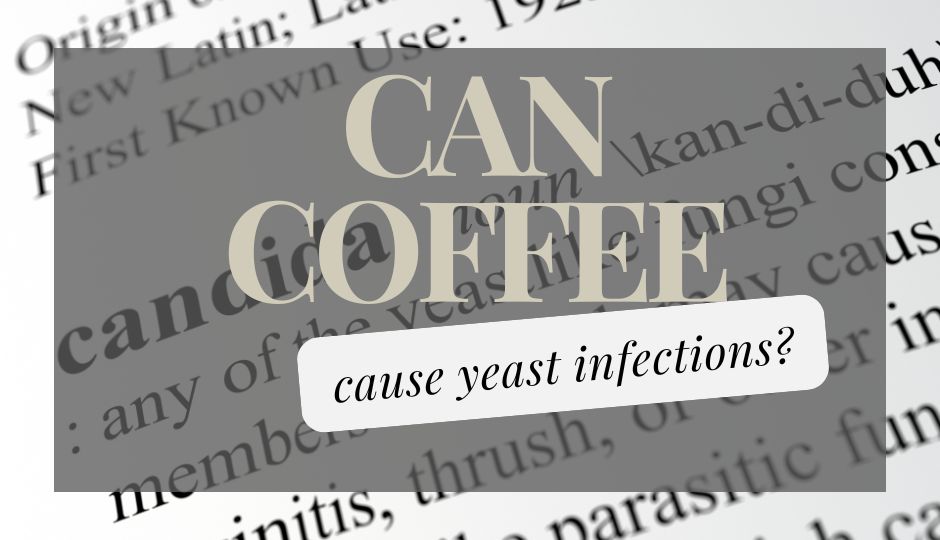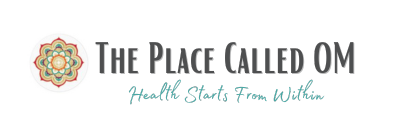Coffee may be causing your yeast infection! Frequent or chronic yeast infections are becoming a common issue for many people. This painful, irritating condition can become unmanageable if not treated correctly. Many people try multiple rounds of antibiotic use with no lasting relief because it is due to a type of yeast that must be treated appropriately. You may be searching for causes, wondering if coffee could contribute to your symptoms. The short answer is MAYBE! Let’s dive in and look at the potential causes of yeast infections and how coffee might contribute to your condition.

*This site may contain links to affiliate websites. As an Amazon Associate, we earn from qualifying purchases. However, this does not impact our reviews and comparisons. We try our best to keep things fair and balanced, at no extra cost to you, in order to help you make the best choice. Thank you for supporting us so we can continue doing what we love!
In this article:
- What is a yeast infection?
- What causes a yeast infection?
- How to prevent a yeast infection?
- Coffee and mycotoxins
- What is the Candida Diet?
- List of Candida diet approved foods
- Tips for starting the Candida diet
What is a yeast infection?
Yeast and fungal infections are due to the overgrowth of fungus in the body. Vaginal yeast infections are the most common but can also be found in the mouth, penis, nipples, nails, skin folds, and navel. Candida albicans is a type of fungus that is commonly associated with yeast infections. Symptoms of yeast infections include burning, itching, abnormal discharge, and sometimes pain. The area may also produce a foul odor and have a white or yellow discoloration of skin or vaginal discharge. Candida infections can often be treated naturally through lifestyle and dietary changes. It’s important to first understand what causes a yeast infection to prevent future health problems.
What causes a yeast infection?
One or more factors can cause a yeast infection. The following list of conditions can lead to yeast and candida overgrowth.
- Weakened immune system
- Medications such as steroids, antibiotics, hormone therapy, chemotherapy, radiation
- Stress
- Sweating
- Poor hygiene
- Sexual activity
- Panty liners or sanitary pads
- Type 2 Diabetes, irregular blood sugar levels
- Commercial dairy products, refined sugars, artificial sweeteners
- Non-organic diet- pesticides, herbicides
- Foods that often carry fungus: coffee, moldy food, nuts, dried fruit, cereal, grains (wheat, corn, rice, etc.)
How to prevent a yeast infection
A person with a compromised immune system is more susceptible to yeast infections and should take extra precautions to maintain a balanced diet and healthy gut microbiome.
It is crucial to prioritize hygiene, especially after sweating, sexual activity, and if sanitary pads are used. Shower and wash thoroughly, making sure to clean between skin folds and letting the area dry completely. 100% organic cotton underwear is recommended for “breathable” support. If using sanitary pads, change them every 2-3 hours or when soiled to prevent irritation and overexposure to sensitive areas.
Consider changing your diet if you are experiencing chronic or frequent yeast infections. Foods with a high sugar content will “feed” the yeast in your digestive tract, making it more challenging to eliminate a fungal infection. Lowering your intake of sugar will reduce the fungal activity. With the addition of antifungal foods such as garlic and onions, the candida overgrowth will decrease, and the body will be less likely to contract a yeast infection. See below for details on the Candida Diet!
Coffee and Mycotoxins
Mycotoxins are a group of naturally occurring fungi (mold) found in foods, including coffee. The most commonly studied and regulated mycotoxins in coffee are Alfatoxin B1 and Ochratoxin A. One study showed that 91.7% of all coffee sampled contained mold! Mycotoxins can cause an increase in adverse health effects, including cancer, liver and kidney damage, intestinal and reproductive disorders, and immune suppression. Unfortunately, the US Food and Drug Administration has allowed one of the highest maximum limits of mycotoxins in the world regarding coffee.
The Food and Drug Administration in the United States says it has strict limits on how much mold can be present on coffee beans imported into the states while maintaining a low risk of toxicity to the consumer. The current maximum limit in the US is 20 parts per billion. This is startling as the EU only allows 5 parts per billion for its maximum limit!
If you consume coffee regularly, you may be exposing yourself to higher levels of fungus and mold, which may increase your risk of yeast infections and candida growth. This is especially true if you combine your coffee with sugar and pasteurized dairy.
While coffee may not be the only contributor to yeast infections, it can increase your chance of having a yeast infection or prevent resolving a yeast infection.
It may be wise to eliminate all coffee if you have been diagnosed with a yeast infection or consume organic coffee that has been rigorously tested to ensure it has zero mold and fungus. Here is a list of clean coffee companies that understand the risk factors associated with high mold levels, fungus, and mycotoxins in coffee.
Clean brands of coffee:
- Purity
- Bulletproof
- Fabula
- LifeBoost
- Top Shelf Grind
- Biodynamic
- Cardiology
- Dynamize
- Magni
- Clean Coffee
- Healthy Bean
- Kion
A few more recommendations for your coffee
Buy whole-bean coffee instead of pre-ground or instant. Buying pre-ground coffee beans may expose the coffee to moisture and other contaminants before packaging, increasing the chances of mold growth. Grinding your coffee at home will reduce mold toxicity exposure.
Ditch the pods. Brewing coffee in plastic Pods or single use servings may leach plastic toxins into your coffee. It is best to use plastic-free brewing equipment such as glass to reduce additional toxic exposure.
What is the Candida Diet?
If you have a yeast infection, you may want to consider the Candida diet before antifungal medications to decrease yeast growth. The Candida diet is a specific set of low sugar foods designed to lower inflammation, promote good gut health, and support the immune system to encourage good bacteria and lower overgrowth of candida.
The Candida diet includes low sugar fruit, gluten-free grains, non-starchy vegetables, healthy fats and oils, and probiotic foods.
Eliminating sugar is one key component to healing a yeast infection. Sugar feeds Candida albicans cellular growth, which, over time, can create a biofilm to protect itself from your immune system, making it even more difficult to eliminate!
Candida is often accompanied by intestinal permeability (leaky gut), which can increase inflammation and often cause autoimmune symptoms. Avoiding inflammatory foods with the Candida diet will help speed up your recovery and promote good gut health. The Candida diet recommends eliminating alcohol, caffeine, and processed foods.
By making these diet changes, restoring your gut microbiome, and reducing bacterial and yeast overgrowth your body can heal naturally.
Candida Diet List of Foods to Eat:
Non-Starchy Vegetables
- Artichokes
- Asparagus
- Broccoli
- Brussels sprouts
- Cabbage
- Cauliflower
- Celery
- Cucumber
- Eggplant
- Garlic (raw)
- Kale
- Onions
- Rutabaga
- Spinach
- Tomatoes
- Zucchini
Low Sugar Fruits
- Avocado
- Lemon
- Lime
- Olives
Gluten-free Grains
- Buckwheat
- Millet
- Oat bran
- Quinoa
- Teff
Healthy Protein
- Anchovies
- Chicken
- Eggs
- Herring
- Salmon (wild)
- Sardines
- Turkey
- Beef
Dairy
- Butter
- Ghee
- Kefir
- Yogurt (probiotic)
Low-mold Nuts & Seeds
- Almonds
- Coconut
- Flaxseed
- Hazelnuts
- Sunflower seeds
Herbs, Spices, & Condiments
- Apple cider vinegar
- Basil
- Black pepper
- Cinnamon
- Cloves
- Coconut aminos
- Dill
- Garlic
- Ginger
- Oregano
- Paprika
- Rosemary
- Salt
- Thyme
- Turmeric
Healthy Fats & Oils
- Coconut oil (virgin)
- Flax oil
- Olive oil
- Sesame oil
Non-sugar Sweeteners
- Erythritol
- Stevia
- Xylitol
Fermented Foods
- Kefir
- Olives
- Sauerkraut
- Yogurt
Beverages
- Chicory coffee
- Filtered water
- Herbal teas
Tips for Starting the Candida Diet
Prepare
It is important to prepare for the Candida Diet. Cleaning out your fridge and pantry and stocking with Candida diet approved foods is a great first step.
Preparing friends and family for your dietary changes is also helpful and provides you with support. You’ll need it!
Find recipes so you do not feel deprived! Pinterest is has a lot of great recipes. This diet isn’t easy but remember, it’s not forever!
Practice
I recommend practicing a few meals and recipes before officially beginning. This often eliminates the overwhelm of a drastic change in eating and routine. This diet may require more time in the kitchen preparing meals since it is difficult to find approved foods on the run. Figuring out how much time you will need to prepare meals will help you stay stress free as you heal.
Progress
On day one of the Candida diet, you might feel great or you might feel terrible. Everyone reacts differently so it’s important to take this into consideration when planning to start the Candida diet. Your progress will be up and down. The die-off of the yeast will often result in flu-like symptoms, nausea, fatigue, etc. This is normal and will resolve once the Candida overgrowth is gone. Stay strong! Consistency is key. If you need more support, check out Facebook groups or other online support groups.
It’s important to talk to your healthcare provider to determine the best course of action for your yeast infection. Hopefully, this gives you more insight into how coffee may be contributing to your yeast infection and the potential benefits of using the candida diet with lifestyle changes.
Sources
- https://www.verywellhealth.com/yeast-infection-7111695
- https://www.fda.gov/regulatory-information/search-fda-guidance-documents/guidance-industry-action-levels-poisonous-or-deleterious-substances-human-food-and-animal-feed#afla
- https://eur-lex.europa.eu/legal-content/EN/ALL/?uri=CELEX:02006R1881-20100701
- https://www.ecf-coffee.org/wp-content/uploads/2020/09/Quality-Control-for-OTA-in-coffee.pdf
- https://pubmed.ncbi.nlm.nih.gov/14726276
- https://www.thecandidadiet.com/
Other articles you may like!
Is Your Reusable Water Bottle Safe? The Truth About BPA and Your Health

